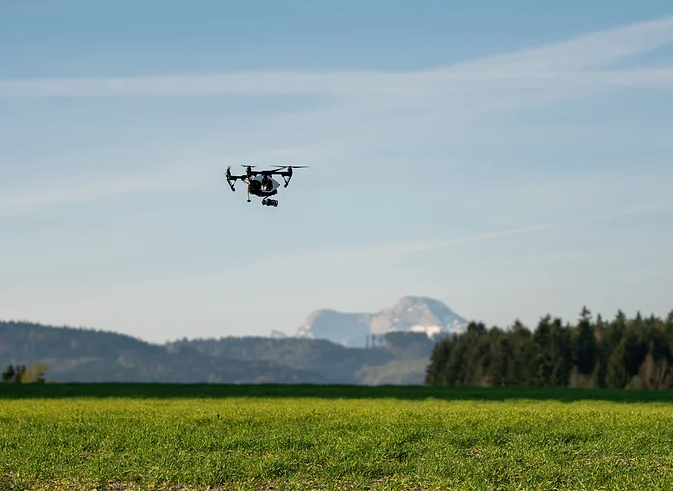The Titan submersible's external parts were discovered, with all five crew members found deceased due to catastrophic implosion. However, on June 18, 2023, a group of five tourists who were exploring the Titanic wreck in a submersible suffered a "catastrophic implosion," killing them all.
The implosion of the Titan submersible is a tragic reminder of the dangers of deep-sea exploration. The high pressure at the bottom of the ocean can be extremely destructive, and even the smallest failure can lead to disaster. The Titanic wreck is also a challenging environment to explore, as it is located in deep water and is surrounded by debris.
The tragedy of the Titan implosion has raised serious questions about the safety of deep-sea exploration. However, it has also highlighted the importance of this work. Deep-sea exploration can help us to learn more about the Titanic and other shipwrecks, and it can also help us to develop new technologies that can be used to protect the ocean environment.
In this blog post, we will take a closer look at the Titan implosion and its aftermath. We will also discuss the lessons that we can learn from this tragedy and how we can make deep-sea exploration safer in the future.
On June 18, 2023, a submersible named 'Titan imploded' near the wreckage of the Titanic, killing all five passengers on board. The submersible, which was operated by Ocean Gate Expeditions, was on a two-hour dive to the Titanic when it lost contact with the surface support ship. A search and rescue operation was launched, but the submersible was not found until four days later.
The cause of the implosion is still under investigation, but it is believed that it may have been caused by a combination of factors, including the high water pressure at the depth of the Titanic wreck (12,415 feet) and a failure of the submersible's pressure hull.
The five passengers who died in the 'TITAN SUBMERSABLE' implosion were:

The deaths of the five passengers in the Titan implosion are a tragic reminder of the dangers of deep-sea exploration. However, they also highlight the importance of these expeditions, which can help us to learn more about the Titanic and other shipwrecks.
So, What Exactly happened with Titan Submersible ?
Day 1: June 18, 2023
The Titan submersible departs from the surface support ship, the M/V Sea Explorer, and begins its two-hour dive to the Titanic wreck. The submersible is carrying five passengers: Stockton Rush, Hamish Harding, Shahzada Dawood, Suleman Dawood, and Paul-Henri Nargeolet.
The dive goes smoothly at first, but at around 11:25 a.m., the Titan loses contact with the Sea Explorer. The crew of the Sea Explorer tries to re-establish contact, but they are unsuccessful.
At 12:00 p.m., a search and rescue operation is launched. The U.S. Coast Guard, the Canadian Coast Guard, and the Royal Canadian Navy all participate in the search. A number of private companies also provide assistance, including OceanGate Expeditions, the company that owned the Titan.
Day 2: June 19, 2023
The search for the Titan continues on June 19th. The search teams use a variety of methods, including sonar, radar, and visual searches. However, they are unable to find any sign of the Titan or its passengers.
Day 3: June 20, 2023
The search for the Titan continues on June 20th. The search teams are starting to become concerned that the Titan has sunk. However, they continue to search for any sign of the submersible or its passengers.
Day 4: June 21, 2023
The search for the Titan continues on June 21st. The search teams are now using autonomous underwater vehicles (AUVs) to search the area. The AUVs are able to search a wider area than the search teams, and they are able to reach depths that are too deep for divers.
At around 11:00 a.m., one of the AUVs finds the wreckage of the Titan. The wreckage is located near the Titanic wreck, at a depth of 12,415 feet.
The wreckage of the Titan is badly damaged. The submersible has imploded, and its pressure hull has been crushed. There is no sign of the five passengers.
The search for the Titan is called off. The five passengers are presumed dead.
Day 5: June 22, 2023
The bodies of the five passengers are recovered on June 22nd. The bodies are recovered by a team of divers from the U.S. Navy. The bodies are taken to a nearby port, where they are identified and released to their families.
Day 6: June 23, 2023
The investigation into the Titan implosion is ongoing. The NTSB and MAIB are working together to gather evidence and determine the cause of the implosion.

The Dangers of Deep-Sea Exploration
The Titan implosion is a tragic reminder of the dangers of deep-sea exploration. The high water pressure at these depths can be extremely destructive, and even the smallest failure can lead to disaster.
Despite the dangers, deep-sea exploration is an important endeavor. These expeditions can help us to learn more about the Titanic and other shipwrecks, as well as the ocean itself. They can also help us to develop new technologies that can be used to explore and protect the ocean environment.
The high water pressure at the depth of the Titanic wreck (12,415 feet).
A failure of the submersible's pressure hull.
A possible leak in the submersible's hull.
A sudden change in pressure that caused the submersible to implode.
The investigation is being conducted by the National Transportation Safety Board (NTSB) and the United Kingdom's Marine Accident Investigation Branch (MAIB). The NTSB and MAIB are working together to gather evidence and determine the cause of the implosion.
What can we learn from the Titan implosion
The Titan implosion was a tragic event, but it can teach us a lot about the dangers of deep-sea exploration.
Here are some of the lessons we can learn from the Titan implosion:
The high water pressure at the depth of the Titanic wreck (12,415 feet) is extremely destructive, and even the smallest failure can lead to disaster.
Submersibles are complex pieces of machinery, and they are susceptible to failure.
It is important to have a comprehensive safety plan in place before any deep-sea exploration expedition.
It is important to have the proper training and equipment for deep-sea exploration.
It is important to be aware of the risks involved in deep-sea exploration and to take steps to mitigate those risks.

The Titan implosion was a tragedy, but it can also be a learning experience. By learning from the mistakes that were made, we can help to prevent future tragedies and make deep-sea exploration safer for everyone involved.
Here are some specific safety recommendations that can be made based on the Titan implosion:
Submersibles should be designed to withstand the high water pressure at the depth of the Titanic wreck.
Submersibles should be regularly inspected and maintained to ensure that they are in good working order.
Crew members should be properly trained in the operation of submersibles and the safety procedures that need to be followed.
Expeditions should have a comprehensive safety plan in place that outlines the risks involved and the steps that will be taken to mitigate those risks.
Drones can help in events like the Titan submersible in a number of ways. They can be used to:
Search for and locate missing submersibles:
Drones can be equipped with sonar and other sensors that can be used to search for missing submersibles in the deep ocean. They can also be used to transmit live video footage of the search area, which can help to guide the search teams.
Inspect the wreckage of the submersible:
Once the wreckage of the submersible has been located, drones can be used to inspect it for damage. This information can be used to determine the cause of the implosion and to improve the safety of future submersibles.
Retrieve the bodies of the victims:
If the bodies of the victims have not been recovered, drones can be used to retrieve them. This can be a difficult and dangerous task, but drones can be used to reduce the risk to human divers.
Drones are a valuable tool for deep-sea exploration and can be used to help in a variety of ways. They are becoming increasingly sophisticated and can be equipped with a wide range of sensors and equipment. As drones continue to develop, they will become even more valuable for deep-sea exploration and will help to make these expeditions safer.
Here are some specific examples of how drones have been used in deep-sea exploration:
In 2018, a drone was used to search for the wreckage of the Costa Concordia, a cruise ship that sank off the coast of Italy in 2012. The drone was able to locate the wreckage and transmit live video footage of the site.
In 2019, a drone was used to inspect the wreckage of the Titanic. The drone was able to provide detailed images of the wreck, which helped scientists to learn more about the ship and its sinking.
In 2020, a drone was used to retrieve the bodies of two divers who had died in a diving accident off the coast of Australia. The drone was able to locate the bodies and bring them to the surface.
Conclusion:
The Titan submersible implosion is a tragic reminder of the dangers of deep-sea exploration. However, it also highlights the importance of this work. Drones can play a vital role in deep-sea exploration, as they are less expensive than submersibles and can be operated from a safe distance. As the demand for deep-sea exploration grows, drone companies will have a unique opportunity to sell their products and services.
Drones are becoming increasingly popular for underwater surveys, and our company is at the forefront of Drone technology. We have a team of experienced pilots and technicians who can help you collect the data you need to make informed decisions about your Drone projects with AEROGO INDIA.
To learn more about how our drones can be used, please visit our website or contact us today. We would be happy to answer any questions you have and discuss your specific needs.













